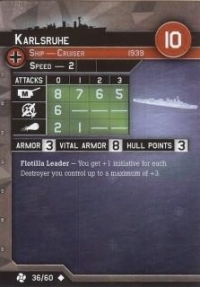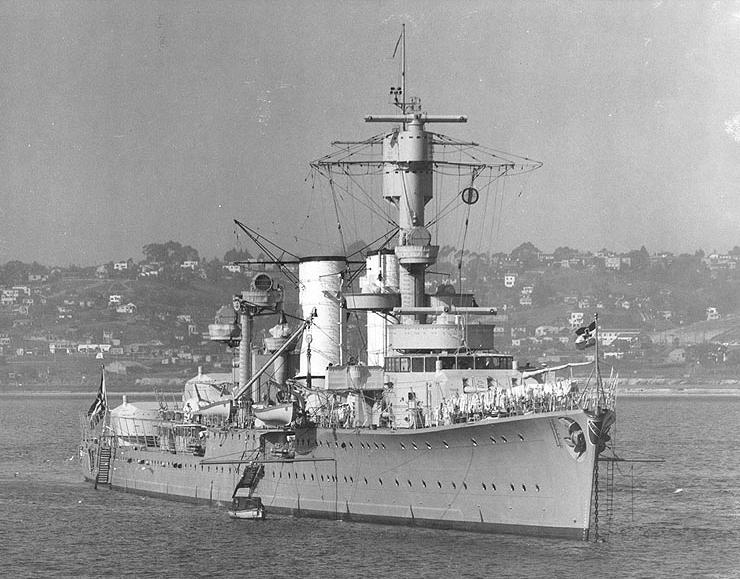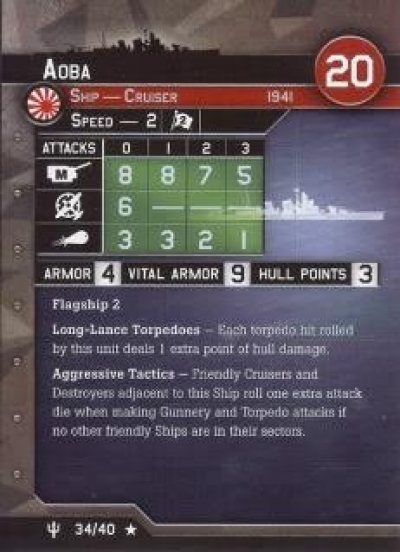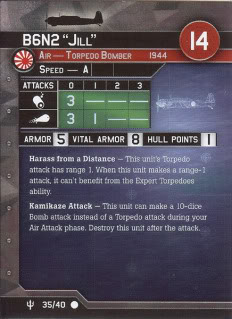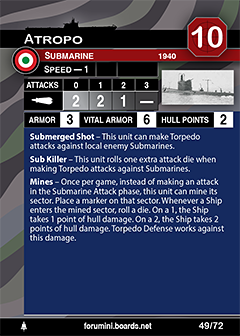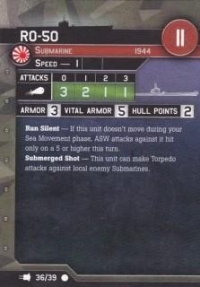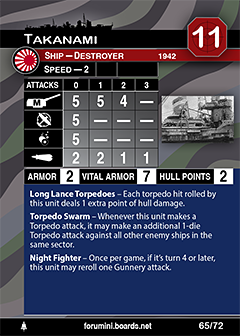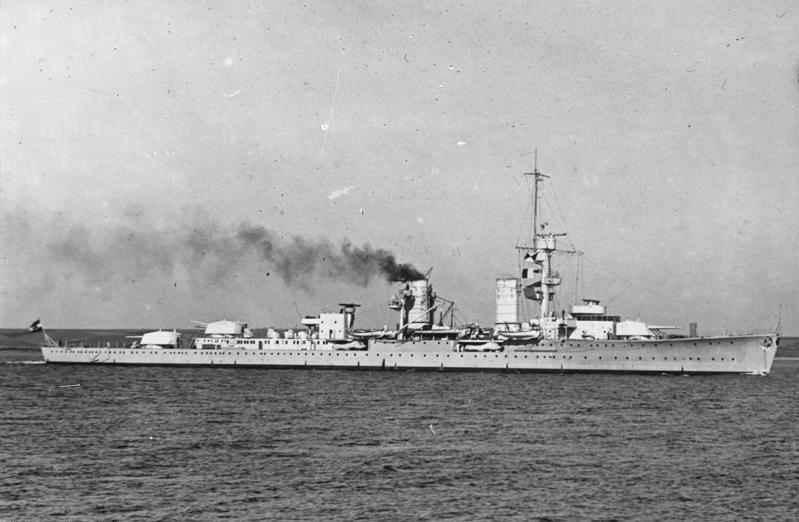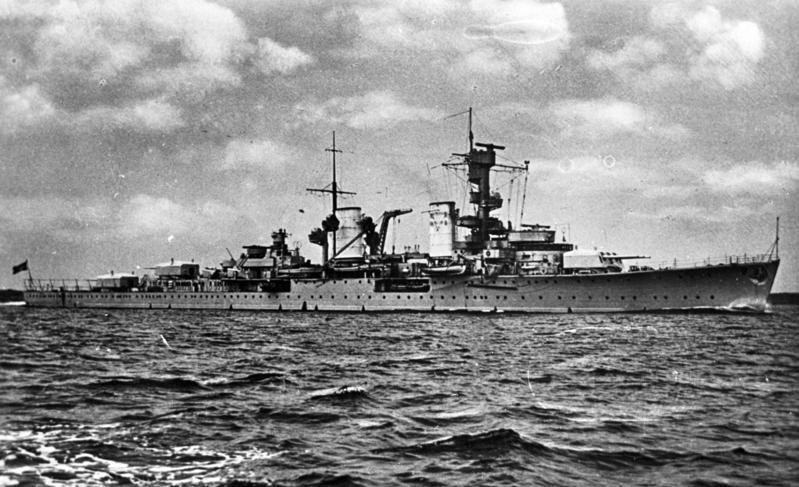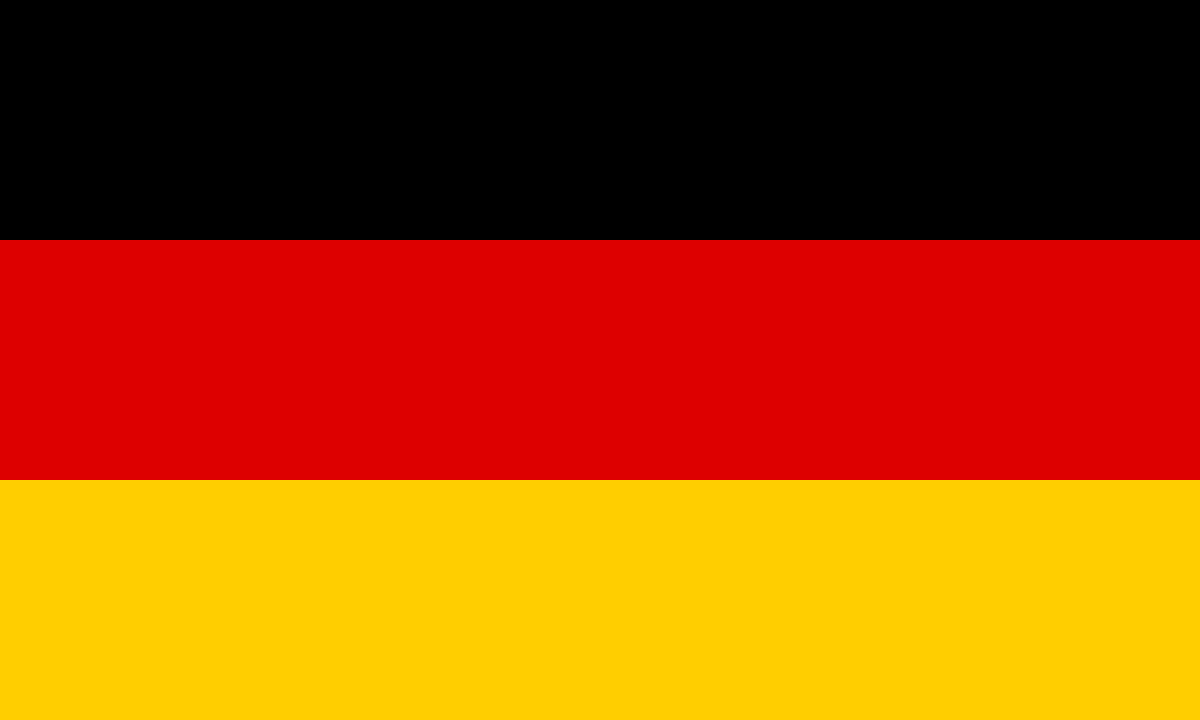Prototype: Karlsruhe was a light cruiser, the second member of the Königsberg class, and was operated between 1929 and April 1940, including service in World War II. She was operated by two German navies, the Reichsmarine and the Kriegsmarine. She had two sister ships, Königsberg and Köln. Karlsruhe was built by the Deutsche Werke shipyard in Kiel; she was laid down in July 1926, launched in August 1927, and commissioned into the Reichsmarine in November 1929. She was armed with a main battery of nine 15 cm SK C/25 guns in three triple turrets and had a top speed of 32 knots (59 km/h; 37 mph).
Like her sisters, Karlsruhe served as a training cruiser for naval cadets throughout the 1930s. During the Spanish Civil War, she joined the non-intervention patrols off the Spanish coast. She was in the process of being modernized at the outbreak of World War II in September 1939, and so she was not ready for action until April 1940, when she participated in Operation Weserübung, the invasion of Norway. She landed troops at Kristiansand, and while returning to Germany, she was attacked by the British submarine HMS Truant; two torpedoes hit the ship and caused significant damage. Unable to return to port, Karlsruhe was scuttled by one of the escorting torpedo boats.
Like her sisters, Karlsruhe served as a training cruiser for naval cadets throughout the 1930s. During the Spanish Civil War, she joined the non-intervention patrols off the Spanish coast. She was in the process of being modernized at the outbreak of World War II in September 1939, and so she was not ready for action until April 1940, when she participated in Operation Weserübung, the invasion of Norway. She landed troops at Kristiansand, and while returning to Germany, she was attacked by the British submarine HMS Truant; two torpedoes hit the ship and caused significant damage. Unable to return to port, Karlsruhe was scuttled by one of the escorting torpedo boats.
Class History: The Königsberg class, sometimes referred to as the K class, was a class of light cruisers of the German Reichsmarine and Kriegsmarine. The class comprised three ships named after German cities: Königsberg, Karlsruhe, and Köln, all built between 1926 and 1930. These ships were the first of the Reichsmarine with a modern cruiser design; their predecessor, Emden, was based on World War I-era designs. They were armed with a main battery of nine 15 cm (5.9 in) guns and with twelve 50 cm (20 in) torpedo tubes.
All three ships of the class were used extensively as training cruisers throughout the 1930s. They went on numerous overseas cruises and participated in the non-intervention patrols during the Spanish Civil War in 1936–1939. After the outbreak of World War II in September 1939, the three ships laid defensive minefields in the North Sea. They all saw action in Operation Weserübung, the invasion of Norway, in April 1940; Königsberg was damaged by Norwegian coastal guns outside Bergen and sunk by British bombers the following day. Karlsruhe was sunk by the British submarine HMS Truant; only Köln survived the attack on Norway.
After returning to Germany, Köln operated Flettner Fl 282 helicopters as an experiment. She provided gunfire support to German ground forces during Operation Barbarossa, the invasion of the Soviet Union in 1941, and returned to Norway in 1942. Ultimately, she was sunk in Wilhelmshaven in March 1945 by American bombers. Her guns were still above water, which allowed her to support the defending German army against British ground forces until the final days of the war.
All three ships of the class were used extensively as training cruisers throughout the 1930s. They went on numerous overseas cruises and participated in the non-intervention patrols during the Spanish Civil War in 1936–1939. After the outbreak of World War II in September 1939, the three ships laid defensive minefields in the North Sea. They all saw action in Operation Weserübung, the invasion of Norway, in April 1940; Königsberg was damaged by Norwegian coastal guns outside Bergen and sunk by British bombers the following day. Karlsruhe was sunk by the British submarine HMS Truant; only Köln survived the attack on Norway.
After returning to Germany, Köln operated Flettner Fl 282 helicopters as an experiment. She provided gunfire support to German ground forces during Operation Barbarossa, the invasion of the Soviet Union in 1941, and returned to Norway in 1942. Ultimately, she was sunk in Wilhelmshaven in March 1945 by American bombers. Her guns were still above water, which allowed her to support the defending German army against British ground forces until the final days of the war.
Country: Germany is a Western European country with a landscape of forests, rivers, mountain ranges and North Sea beaches. It has over 2 millennia of history. Berlin, its capital, is home to art and nightlife scenes, the Brandenburg Gate and many sites relating to WWII. Munich is known for its Oktoberfest and beer halls, including the 16th-century Hofbräuhaus. Frankfurt, with its skyscrapers, houses the European Central Bank.
Item created by: Lethe on 2015-05-31 17:46:30. Last edited by gdm on 2019-08-13 22:17:50
If you see errors or missing data in this entry, please feel free to log in and edit it. Anyone with a Gmail account can log in instantly.
If you see errors or missing data in this entry, please feel free to log in and edit it. Anyone with a Gmail account can log in instantly.


